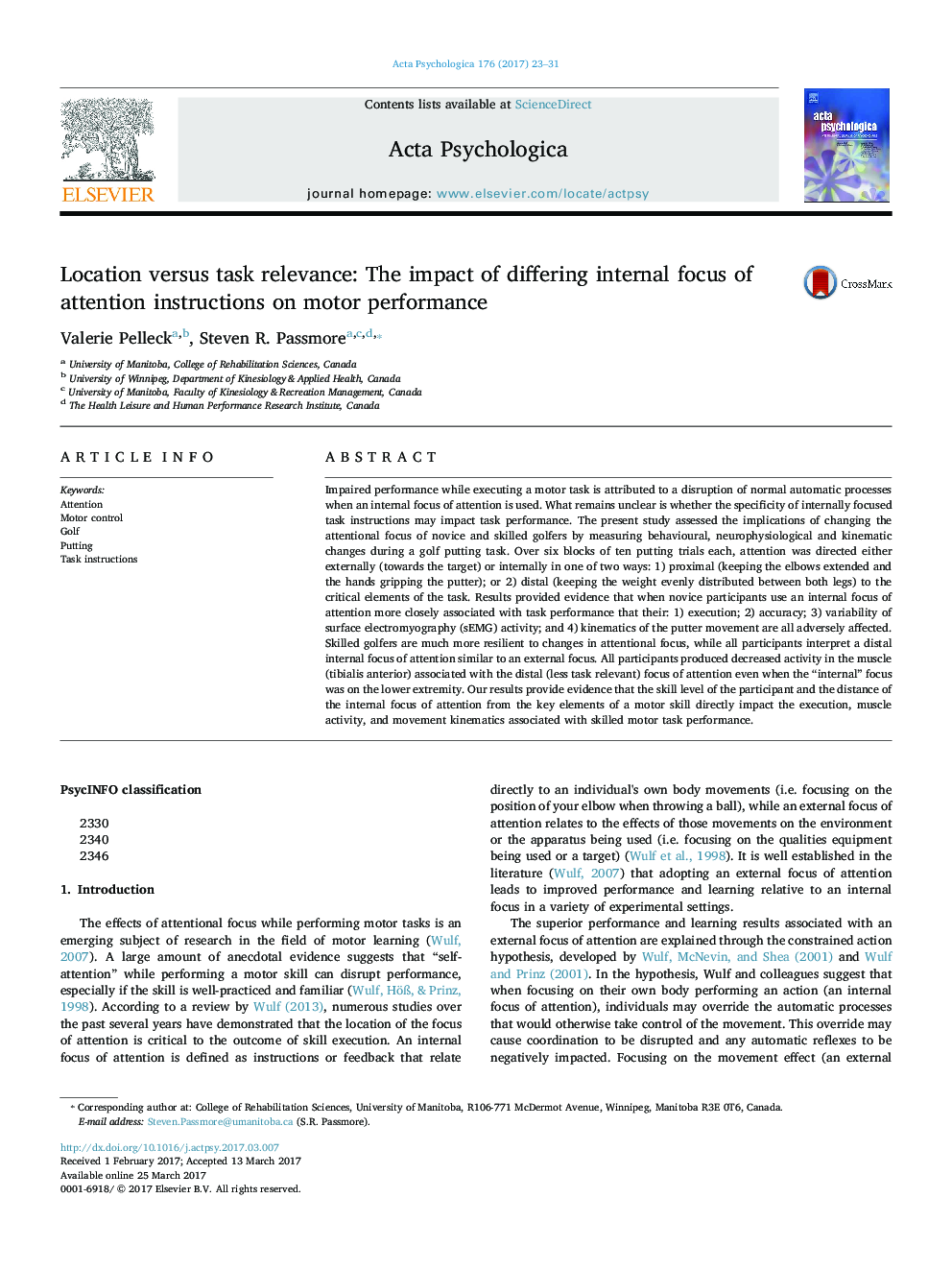| Article ID | Journal | Published Year | Pages | File Type |
|---|---|---|---|---|
| 5040204 | Acta Psychologica | 2017 | 9 Pages |
Impaired performance while executing a motor task is attributed to a disruption of normal automatic processes when an internal focus of attention is used. What remains unclear is whether the specificity of internally focused task instructions may impact task performance. The present study assessed the implications of changing the attentional focus of novice and skilled golfers by measuring behavioural, neurophysiological and kinematic changes during a golf putting task. Over six blocks of ten putting trials each, attention was directed either externally (towards the target) or internally in one of two ways: 1) proximal (keeping the elbows extended and the hands gripping the putter); or 2) distal (keeping the weight evenly distributed between both legs) to the critical elements of the task. Results provided evidence that when novice participants use an internal focus of attention more closely associated with task performance that their: 1) execution; 2) accuracy; 3) variability of surface electromyography (sEMG) activity; and 4) kinematics of the putter movement are all adversely affected. Skilled golfers are much more resilient to changes in attentional focus, while all participants interpret a distal internal focus of attention similar to an external focus. All participants produced decreased activity in the muscle (tibialis anterior) associated with the distal (less task relevant) focus of attention even when the “internal” focus was on the lower extremity. Our results provide evidence that the skill level of the participant and the distance of the internal focus of attention from the key elements of a motor skill directly impact the execution, muscle activity, and movement kinematics associated with skilled motor task performance.
